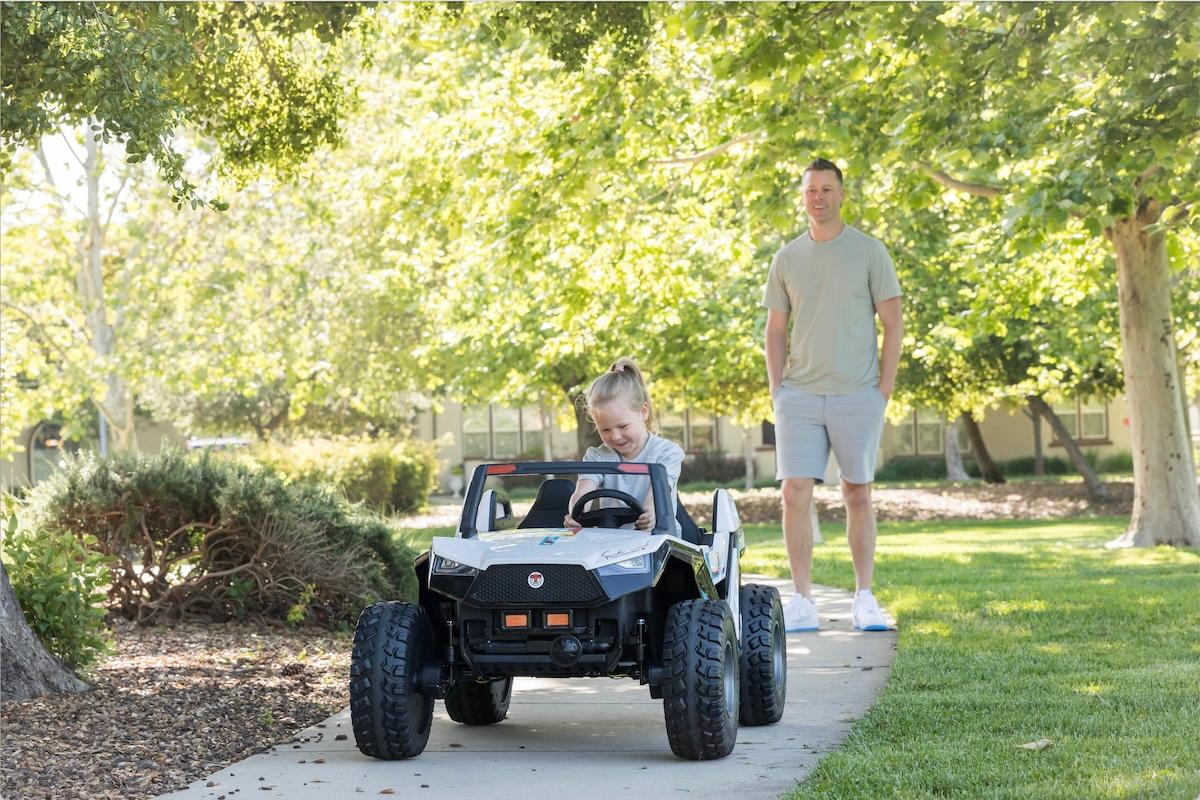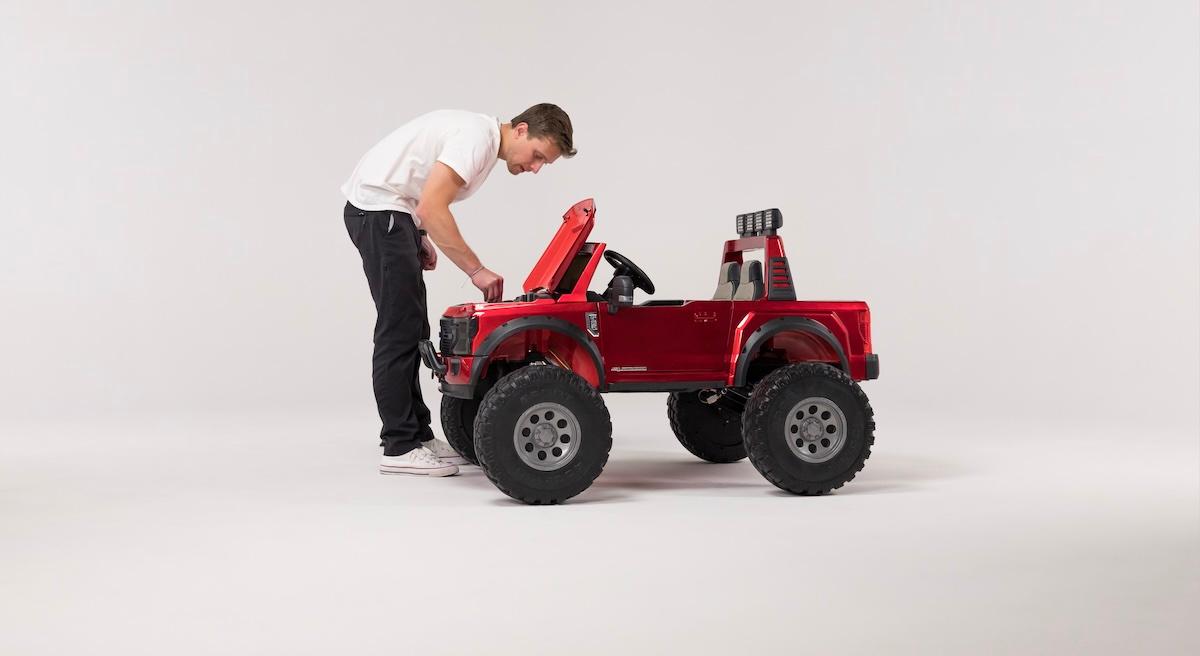How Ryder Toys Went From a Garage Project to a Multimillion Dollar Ride-On Brand
One spark of inspiration turned into a fast-scaling company redefining childhood.
Published April 17 2025, 6:18 p.m. ET

“I saw that old Barbie Jeep on the sidewalk and couldn’t stop thinking about it. It was like a lightning bolt moment,” Steff recalls.
A civil engineer turned entrepreneur; Steff had spent years managing utility projects. But he was also always looking for ways to improve things. The thought gnawed at him—why hadn’t ride-on toys evolved?
He remembered his ride-on from his childhood with affection. But he realized that the Barbie Jeep he saw would have tied his old one in a race.
Why, he asked, had everything from electric vehicles to e-bikes advanced, but kids were still driving underpowered plastic cars that hadn’t changed in decades?

That realization set off a chain reaction. He developed a way for the wheels to turn faster, which in turn made his prototype able to gain more speed and tackle more than just. pavement. Steff walked away from his job and bet everything on Ryder Toys.
What started in a garage quickly became a multi-million-dollar business delivering some of the most innovative ride-on vehicles on the market.
Reinventing the Ride-On Toy
Scroll through RyderToys.com, and you won’t find the same outdated plastic cars that parents grew up with. Instead, the company offers a lineup of high-performance, all-terrain ride-ons that look and feel more like real off-road vehicles, but always with kid safety in mind.
There’s the Ryder 24V UTV, a four-wheel drive buggy that can power through grass, gravel, and dirt. The 24V Jeep comes with upgraded shock absorbers and realistic LED lighting.
Then there’s the Ryder Buggy, a model that’s built for adventure with powerful motors, oversized wheels, and a reinforced frame.

But it’s not just about performance. Parents wanted more control over their kids’ ride-ons, so every Ryder model comes with a parental remote system that allows them to override the vehicle at any time.
“The old ride-ons? They were slow, clunky, and barely moved on anything but pavement,” Steff says. “We built something that actually performs—something that makes kids feel like they’re driving a real car.”
And parents took notice.
Scaling Fast
Ryder Toys launched fast and grew even faster.
Within 12 months, the company went from zero to $6 million in revenue, entirely bootstrapped. That kind of growth would be a dream scenario for most startups, but it came with serious growing pains.
The biggest challenge? Keeping up with demand.
“We ran out of inventory. It was awesome—but also a nightmare,” Steff admits.
Every time Ryder Toys restocked, the products sold out within weeks. While that kind of demand validated the brand; it also created a logistical nightmare.
And then there were the missed PR opportunities. The Kelly Clarkson Show featured Ryder Toys in a holiday giveaway, which was a huge moment for brand exposure. The company couldn’t capitalize on it.
“I am not sure I realized what an amazing opportunity that was at the time. I was too busy trying to get more units produced,” Steff says with a grin.
Lessons From the Fast Lane
Scaling at hyperspeed forces a company to either adapt or collapse. For Steff, the biggest lesson was letting customers dictate the market.
"You have to adapt fast, or you’re done. There are so many lessons I learned,” he says. Ryder Toys initially focused on replica luxury ride-ons, but as demand shifted toward rugged, all-terrain models, the company pivoted.
That flexibility is what took Ryder Toys from a niche player to one of the fastest-growing ride-on brands in the U.S.
Another hard lesson? Reinvestment is everything.
For years, Steff didn’t take a salary, putting every dollar back into product development and inventory.
"I thought I’d get to surf more when I became my own boss—turns out I surf a lot less,” he says.
The sacrifices paid off.
The Road Ahead
Ryder Toys isn’t slowing down. The company is already exploring partnerships with major brands, including automotive and tire companies, to create branded collaborations that introduce kids to real-world car culture.
"If you’re a car brand, you want your name in kids’ memories early,” Steff explains. "Imagine growing up riding a mini Rivian or Jeep—what’s the first car you’re going to want as an adult?"
The company is also doubling down on product customization. New features like personalized license plates, sticker packs, and limited-edition models are set to roll out, giving kids even more ways to make their ride-on unique.
Meanwhile, competitors are scrambling to keep up.
"Our goal? To make Ryder Toys a household name,” Steff says. Given the company’s trajectory, they are in the race.
More Than Just a Toy
For Steff, Ryder Toys isn’t just about ride-ons. It’s about bringing back childhood adventure.
“Every parent I talk to says the same thing: ‘I wish I had this when I was a kid,’” Steff says.
That’s the magic of Ryder Toys. It’s not just creating epic experiences for kids—it’s letting parents relive their own.
And in doing so, it’s changing the ride-on industry forever.
Ryder Toys isn’t just following trends—it’s setting them. And if the company’s track record is any indication, this is only the beginning.
Explore the latest lineup of ride-ons at RyderToys.com